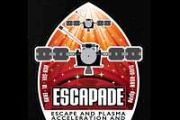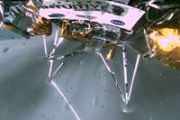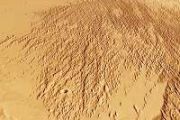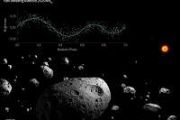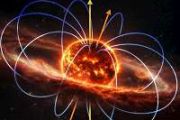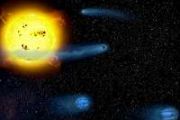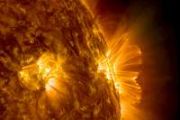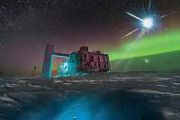
Copernical Team
ESA teams up with Leonardo against satnav jamming
Press Release N° 36–2025
Uninterrupted access to satellite navigation is essential in our modern world, but it is threatened daily by external interference, such as jamming and spoofing. New technologies and concepts can help increase the resilience of our satellite navigation solutions. ESA and Leonardo are embarking on a joint project to explore smart antennas powered by Machine Learning to block unwanted signals.
ESA at Le Bourget 2025 - Day One Highlights

The European Space Agency has begun the 55th International Paris Air Show by unveiling the first images from the Proba-3 spacecraft.
First artificial solar eclipse in space
 Video:
00:01:40
Video:
00:01:40
Proba-3 artificially created what is normally a rare natural phenomenon: a total solar eclipse.
In a world first, ESA’s Proba-3 satellites flew in perfect formation, blocking the Sun’s bright disc to reveal its fiery corona. This enigmatic outer layer burns millions of degrees hotter than the Sun’s surface and drives the solar storms that can disrupt life on Earth.
With its first artificial eclipse, Proba-3 has captured detailed images of this mysterious region, offering scientists new insights into our star’s behaviour.
Read the full story here.
SpaceX sends up Space Coast's 50th launch of the year
This request seems a bit unusual, so we need to confirm that you're human. Please press and hold the button until it turns completely green. Thank you for your cooperation!
Press and hold the button
If you believe this is an error, please contact our support team.
185.132.36.159 : eb9e3c69-b308-440b-88e9-133c308b
Amid NASA cuts, popular social accounts for Mars rovers, Voyager going dark
This request seems a bit unusual, so we need to confirm that you're human. Please press and hold the button until it turns completely green. Thank you for your cooperation!
Press and hold the button
If you believe this is an error, please contact our support team.
185.132.36.159 : 62d2d3e9-2f7c-4b8c-8bed-62bfb331
A better way to turn solar sails
This request seems a bit unusual, so we need to confirm that you're human. Please press and hold the button until it turns completely green. Thank you for your cooperation!
Press and hold the button
If you believe this is an error, please contact our support team.
185.132.36.159 : 6debf1c9-5a28-4ae4-9a9b-e7e02b13
Axiom Space back on track for possible Space Coast launch
This request seems a bit unusual, so we need to confirm that you're human. Please press and hold the button until it turns completely green. Thank you for your cooperation!
Press and hold the button
If you believe this is an error, please contact our support team.
185.132.36.159 : 54273730-a77b-4aa4-ba66-ac7d29c0
Living on Mars: Are there lessons from the conditions of prisons?
This request seems a bit unusual, so we need to confirm that you're human. Please press and hold the button until it turns completely green. Thank you for your cooperation!
Press and hold the button
If you believe this is an error, please contact our support team.
185.132.36.159 : a8d730ac-fc59-41ab-b783-db72a278
ESA-CNES press conference at Le Bourget Paris Air Show 2025
 Video:
00:24:33
Video:
00:24:33
Watch the replay of the ESA-CNES press conference held at the Paris Air Show 2025 (Le Bourget) on 16 June 2025, with Josef Aschbacher, Director General of ESA, and Lionel Suchet, Executive Vice President of CNES.
Proba-3’s first artificial solar eclipse

Today, the European Space Agency’s Proba-3 mission unveils its first images of the Sun’s outer atmosphere – the solar corona. The mission’s two satellites, able to fly as a single spacecraft thanks to a suite of onboard positioning technologies, have succeeded in creating their first ‘artificial total solar eclipse’ in orbit. The resulting coronal images demonstrate the potential of formation flying technologies, while delivering invaluable scientific data that will improve our understanding of the Sun and its enigmatic atmosphere.

